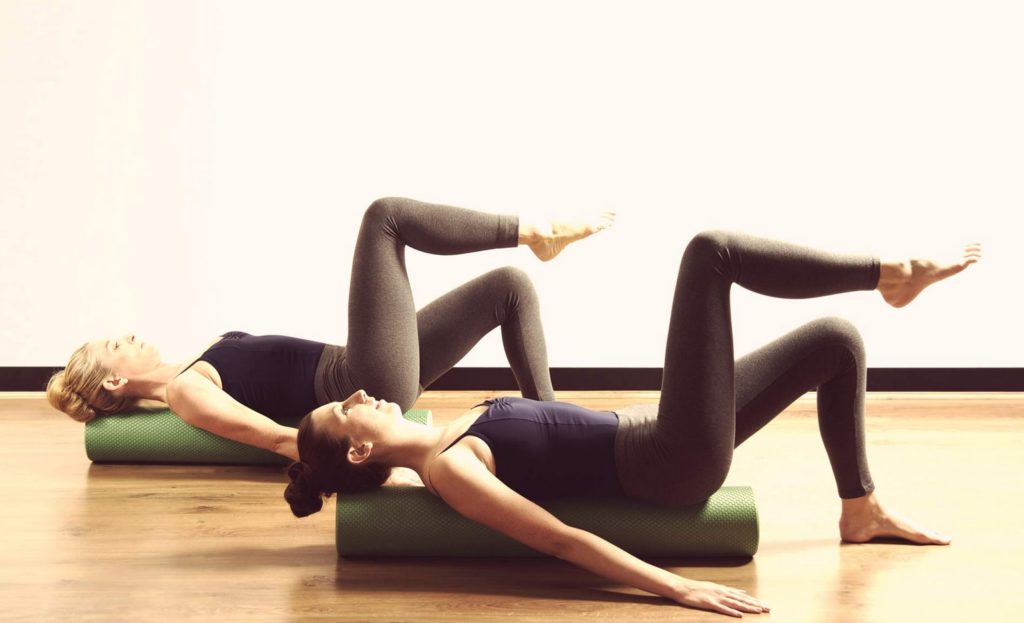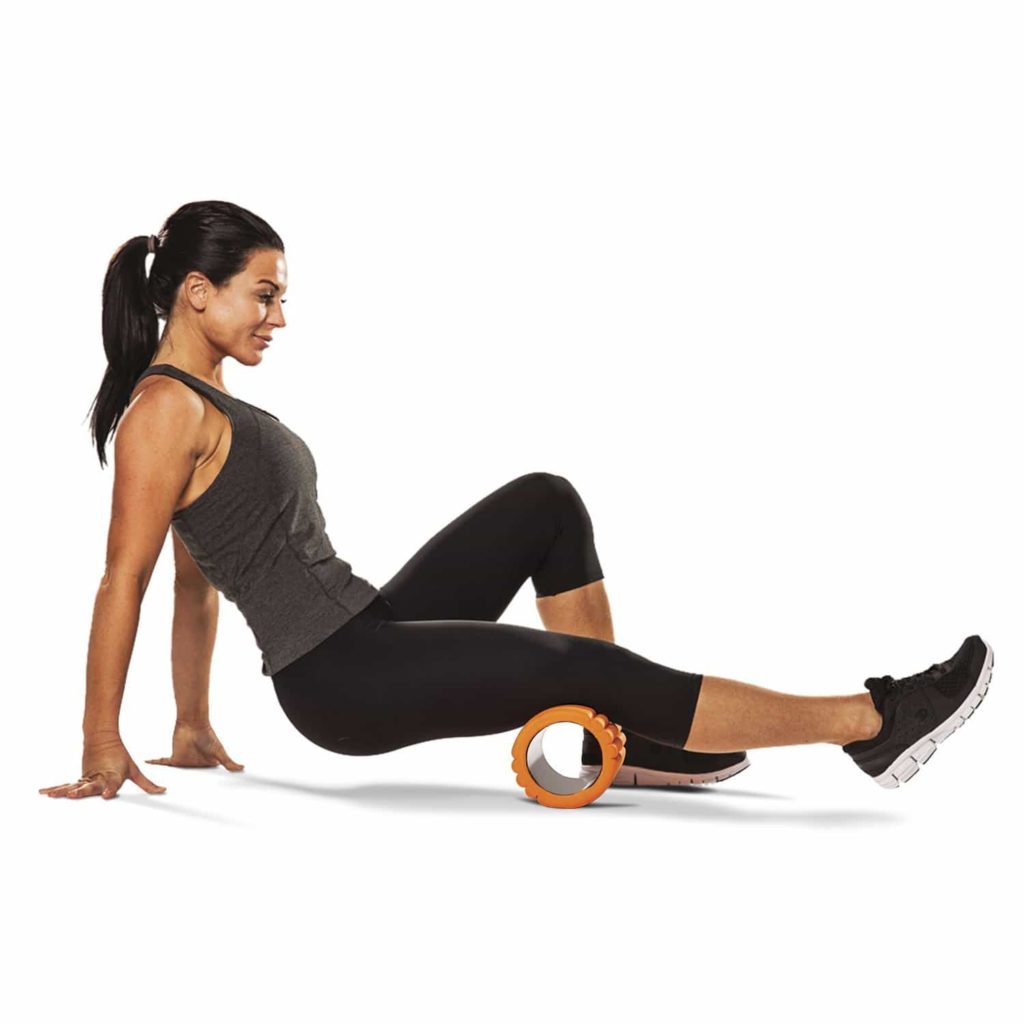Today’s changing times demand new ways to exercise and foam rollers are one such form that are gaining popularity. Foam rollers are also said to improve flexibility. But what are foam rollers? How do they improve flexibility? And more importantly how must you use them in a manner that will benefit you? Well read on to find out answers to all these questions and more.
Start Right
A fitness analysis by a trained professional to see a person’s endurance and fitness levels is a must before you start exercising using foam rollers. Myofascial release is a form of massage where the fascia of the muscle tissues are worked on, so as to get rid of the knots that are formed due to constant loads placed on the muscles. “Myofascial Release is performed by trained masseurs but when it is to be done on a regular basis, one can opt for Self-Myofascial Release or Foam Rolling as it is commonly termed, is a massaging technique that requires a sturdy foam roller to open up the knots in muscle tissues,” says Manoj Sarangapani, Fitness Coach, Obino. Exercise is an important part of a daily routine along with that physical therapy is also necessary and likewise, foam rollers are exercise devices used for massage and fitness and it is a valuable piece of equipment for exercise and rehabilitation program. “These are usually long and cylindrical; they come in many shapes, sizes and varying textures. Foam rollers are inexpensive, easy to use and therefore, it can be used for many different purposes and can have positive effects not only on many different ailments but also on improving sports performance as well as patients who troubled by back pain, joint pain etc. It can be easily used for self-massage that will help soothe tight, sore areas and speed up muscle recovery,” says Deepak Jha, Fitness Expert & Consultant, Medanta Hospital. Foam rollers are commonly used as a prop either just before a workout or after. “Rather than as a complete form of exercise, foam rollers are used more as a therapy to treat sore and rigid muscles. When foam rollers are used before a workout, they mobilize and prep your muscles to get stretched. During the workout, foam rollers can be used to open up hamstrings and make your body more supple. When used post a workout, they can be used to treat knots created in the muscles,” says Grandmaster Akshar, Chairman, Course Director, Akshar Yoga.
The Specifics
This technique works as a deep tissue massager and will help you become more coordinated as you incorporate it into your yoga routine. “In fact, if you like to mix things up and with other forms of exercise like running and crossfit that could give you sore muscles, foam roller can ease pain and discomfort. The benefits of foam rolling is that it gets more out of your self-massage and helps stretch your tight muscles, tendons and ligaments. It release muscle fatigue, prevent sports injuries, recover more quickly from injuries and muscle fatigue and increase range of motion and flexibility. You can give yourself a soothing abhyanga and follow it up with foam rolling to just get deeper into releasing tension and toxins,” says Jeevika Tyagi, CEO, AllAyurveda.com. Dr. Hardik Patel, Head physiotherapy, Hiranandani Hospital Vashi- A Fortis Network Hospital avers, “post a workout, muscles can ache for days. Foam rollers can be used to speed up the recovery process. It can be used to correct alignment, increase neuro muscular coordination and improve motor control. It is an added therapy to enhance core muscles as well as target the whole body.” Foam rollers naturally and accordingly respond to the body’s pressure. As you roll over tight spots or trigger points, the muscle relaxes. Especially for tight spots and muscles, applying pressure at a constant rate might work better than simply rolling back and forth. “Place one, or both, hands on top of a foam roller during a full plank or push up, or slide your roller under your toes during either exercise. This will force your body to work harder to stabilize. While supporting your body, place the target muscle on top of the foam roller and move yourself over it. The pressure applied by your own bodyweight presses out the soft-tissue, releasing tension and stimulating blood flow along with ironing out any sticking points,” opines Akshay Verma, Co-founder, FITPASS. Prosenjit Biswas, Fitness Manager, Skulpt avers, “foam rollers are normally used to increase elasticity of body joints and connective tissues. It can reduce stiffness and soreness by more than 40%. There are different types of rollers. The softer ones are basically for general massage and the harder ones work better on deep tissue massage.”
Flexibility Matters
Foam rollers aid in the circulation of blood and increases flexibility by reducing the fuzz of the human body. It increases the range of motion and enhances performance of the targeted muscle part enabling it to lengthen its capability to its full extent. Leander Wheatley, Engineering and Base Maintenance Department, Jet Airways a fitness enthusiast says, “foam rolling is great at correcting muscle imbalances, intra-set foam rolling for over active muscles dampens that neurological response and disperses the load on to the muscles it’s intended for and help recovery , so basically by anybody in fitness or as a general massage to loosen tight muscles. I use a foam roller after every cycle ride/workout and each time I use it I feel as if I have had a quick sports massage.” Foam rolling does not directly improve flexibility. “After foam rolling if you do some static stretching, there can be some improvement in flexibility. Incorporating foam rolling into your fitness routine will make you feel relaxed and less stiff. And if your muscles are less stiff, your performance in your workout is a lot better and you are more safe from injuries,” says Shwetambari Shetty, Zumba Educational Specialist – Master Trainer India, Fitness Expert – Cult. Vasudha Aggarwal & Niran Ponnappa- Founders, The Fit District opines, “if foam rolling is done regularly and consistently (at least thrice a week), you will definitely see positive changes in your flexibility, and in your performance of various exercises, be it weight training or metabolic conditioning.” Many people feel that they are not flexible because of tight or shortened muscles, but constricted muscle fascia is the more likely a culprit keeping them from reaching their toes. When you use the roller as a part of your warm up , your muscles are much more relaxed, releasing those knots and lengthened with stretches that enables u to perform better with increased flexibility. A lot of professional athletes, body builders are regular in foam rolling because of its importance relating to performance,” says Swetha Devraj, adidas Runner Athlete.
Take Care
Your first time with a foam roller could be painful. It’s just like getting a really firm massage on sore spots. Once you work out on the kinks in your muscles and ligaments, you’ll start to look forward to your session with a foam roller. Never use a foam roller on an injured muscle. “Consult your doctor or physical therapist before using it for exercise or stretching purposes. Beware that the foam roller is not intended for use on some joints, such as knees and elbows. It targets muscles and soft tissue, so place it on the muscle before starting your massage routine,” advices Manmeet Manchanda Fitness Trainer Anytime Fitness. It is imperative to research on different types of foam rollers. There are different lengths and diameters available; there are even half rollers that lay flat on the floor for improved balance. “Most rollers are roughly six inches in diameter; lengths vary from 12 to 36 inches. If you’re rolling your upper back and shoulders, a longer roller ensures you won’t fall off the ends. For single-arm and single-leg rolling, a shorter roller should suffice. A shorter roller is also more convenient to take with you to work or the gym,” advices Dr. Mickey Mehta. There are many conditions where one can use this technique to correct alignment, to reduce pain and stiffness. If you however have severe osteoporosis or is aged, it is better to avoid this form of exercise. “Find areas that are tight and cause pain, apply moderate pressure using the foam roller and bodyweight. Move slowly at an approximate rate of one inch per second. When you find areas that are more tight and painful, pause and relax. You should feel the muscle relaxing and after a while the pain should lessen. If the trigger point is very painful to work with at first, move the roller in the surrounding areas and slowly release, moving in from there,” says Sarangapani. The placement of the roller and the right movement of the muscles are extremely important. “Hence prior to using the roller the cause of the pain has to be analyzed by detailed evaluation as at times the site of cause of pain and the area of the body wherein the pain is perceived may be different. Good posture while using the roller is mandatory. The movement of the muscle over the roller should be very slow and one should avoid staying on the painful area for a very long time,” says Dr. Yashoda Wagh, Physiotherapist, Bhatia Hospital, Mumbai. One may feel some soreness the next day after foam rolling. Hydrating yourself with plenty of water, eating clean and getting good sleep will help to flush your system of toxins and make your muscles feel rejuvenated and ready for work again. Foam roller can be done by someone who has a sedentary lifestyle, as this creates a lot of stiffness and reduces mobility.
Do’s & Don’ts
- Never perform any routine without professional assistance, always use foam rollers under observation.
- For those who experience musculoskeletal pain, consulting a physiotherapist is a must.
- Never roll your joints or bones.
- Don’t roll your lower back. Use a tennis ball instead.
- Do roll slowly—no more than one inch per second. Never roll in a fast back-and-forth motion.
- Do wait 24-48 hours between foam-rolling sessions. Your body needs time to recover.
- Pregnant women must refrain from using this prop.
- People with back injuries must be very careful whole using this prop.
This story appeared in the August 2017 issue of Smartlife magazine here: SL_0817_14-15_Fitness trend

